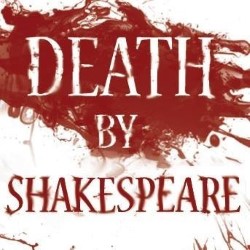Back for its fourth outing at the Edinburgh Fringe, Death by Shakespeare attempts the seemingly impossible feat of injecting originality into the words of the Bard – and largely succeeds. As the audience enter the dimly lit environs of theSpace’s Upper Theatre on Niddry Street, they’re greeted by a tableau of 20 or more ‘spirits’ swaying softly on stage, a discordant wail emerging from their mouths. It is an eerie beginning to a show which uses physical theatre, choreography and no little amount of imagination to recreate some of the more memorable death scenes from Shakespeare’s canon.
The basic premise of the shows appears to be that each of the ‘spirits’ will replay their own moments of mortality for the audience’s pleasure, with an X-Factor-style clapometer vote held at the end to pardon one lucky soul from damnation. It’s an original (if slightly confused) idea that lays the groundwork to allow Romeo, Juliet, Ophelia, Lady Macbeth and others to take centre stage and do their thing. Some of these deaths are genuinely inventive and impressive; Ophelia’s drowning among the undulating pool of her peers is a standout moment, while Pyramus’ bawdy bow-out is reminiscent of how a child might drag out being killed when playing cowboys and Indians (in a good way).
The latter is probably the performance’s most engaging moment, with the actor’s comedic timing a respite from the constant slaughter which has preceded it. It does seem a little out of place, the farcical nature of the death scene out of step with the wailing and gnashing that surrounds it, and in general the narrative seems uneven and incoherent at times. It’s difficult enough to follow ‘ye olde English’ when it sticks to a linear script, but with Hurly Burly cutting and pasting lines from one play to another and leaping around haphazardly, it’s even trickier.
The concentration on just a handful of the more famous plays (Romeo and Juliet, Hamlet and Macbeth dominate proceedings) is another minor criticism, since Julius Caesar’s stabathon and Desdemona’s heart-breaking asphyxiation at the hands of her beloved would have been welcome additions. However, it’s less about the content and more about the form with this piece, and its strongest hackle-raising moments come when the cast bark lines in unison or move with impressively choreographed rhythm. For anyone who inhabits the overlapping space of the Shakespeare and physical theatre Venn diagram, it’s sure to be a delight, but even those in one of the outer circles will still go home happy.
